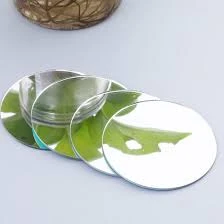

The Benefits and Application of Low-Emissivity (Low-E) Glass Surface Coating
In recent years, the demand for energy-efficient building materials has surged as the world becomes increasingly aware of the importance of sustainability and energy conservation. One of the most innovative materials making waves in this sector is low-emissivity (low-E) glass. This specialized glass surface coating significantly enhances energy efficiency in buildings by minimizing heat transfer, thereby reducing energy costs and contributing to a more sustainable environment.
Understanding Low-E Glass Coating
Low-E glass is coated with a thin layer of metallic oxide that reflects infrared light while allowing visible light to pass through. This unique property is what makes low-E glass stand out. The coating serves two primary functions it reflects heat back into a space during winter, helping to retain warmth, and it keeps heat out during summer, thereby maintaining cooler indoor temperatures. The result is a significant reduction in energy consumption for heating and cooling, making low-E glass a crucial component in modern construction practices.
Types of Low-E Coatings
There are two main types of low-E coatings hard coat and soft coat. Hard coat, or pyrolytic, is applied during the manufacturing process while the glass is still hot, creating a durable bond. This type is ideal for single-pane glass and provides good performance in terms of blocking heat flow. However, it may not offer the same levels of optical clarity and performance as soft coat glass.
Soft coat, on the other hand, is applied to glass after it has been manufactured and cooled. This coating is more effective at reducing heat transfer and offers better clarity and visual comfort. It is typically used in double or triple-glazed windows, where the space between panes can also provide added insulation due to the vacuum or gas fill.

Energy Efficiency and Building Benefits
The adoption of low-E glass significantly contributes to energy efficiency in buildings. By utilizing low-E windows, building owners can reduce their heating and cooling costs by up to 30%. This enhanced energy efficiency not only translates into financial savings but also increases the overall comfort within the building. Natural sunlight can penetrate without the excessive heat buildup associated with traditional glass, ensuring well-lit yet pleasant indoor environments.
Moreover, low-E glass can contribute to sustainability goals. Buildings equipped with this type of glass reduce their carbon footprint by lessening reliance on heating and air conditioning systems. This makes low-E glass an essential element in green building certifications such as LEED (Leadership in Energy and Environmental Design), encouraging construction practices that are both environmentally friendly and energy-efficient.
UV Protection and Interior Longevity
Another noteworthy advantage of low-E glass is its ability to block damaging ultraviolet (UV) rays. While it is crucial for occupants to enjoy natural light, excessive UV exposure can lead to fading of fabrics, artwork, and furniture. Low-E coatings effectively filter out a significant portion of UV rays, thereby preserving the aesthetic quality and longevity of interior spaces. This added layer of protection can be particularly beneficial in residential settings, where costly furnishings and decor can degrade over time due to sun exposure.
Conclusion
In conclusion, low-emissivity glass surface coating represents a remarkable advancement in construction materials, providing a host of benefits that align with today’s focus on energy efficiency and sustainability. By minimizing heat transfer, lowering energy costs, and protecting interiors from UV damage, low-E glass contributes to more comfortable and environmentally responsible living and working spaces. Incorporating low-E coatings in modern architecture not only enhances building performance but also aligns with global efforts to reduce energy consumption and combat climate change. As the industry continues to evolve, the importance of low-E glass in shaping a sustainable future cannot be overstated.